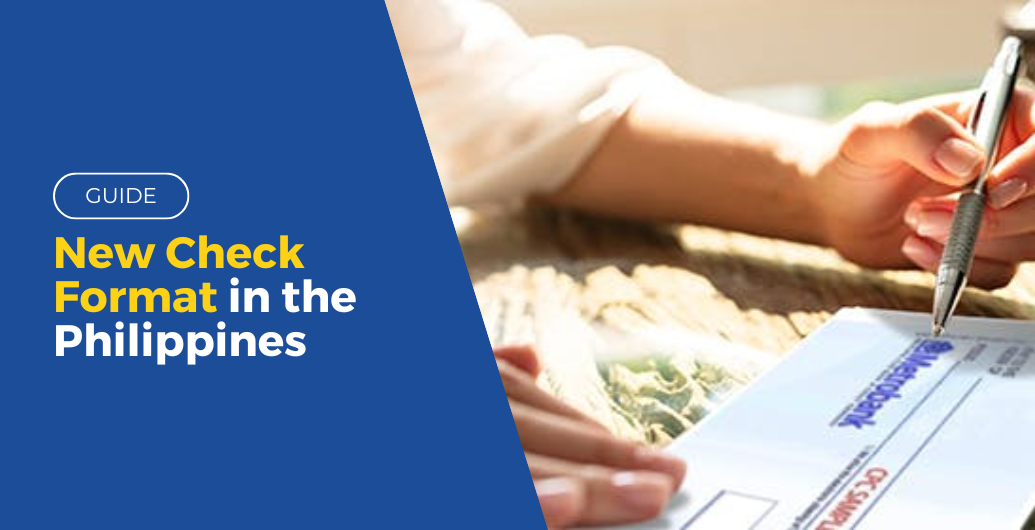Estimated reading time: 4 minutes
After a one-year delay, Philippine banks have commenced the adoption of the new check format. The said design is mandated by the Philippine Clearing House Corporation (PCHC).
In addition to strengthening banks’ check processing capabilities, the new check format seeks to establish a uniform method for completing checks. This is to reduce errors and misunderstandings.
With that, here are the key points to note about the rollout of the new check format in the Philippines.
Table of contents
Format Changes
There are three primary modifications in the design and format of the check. Here’s the recommended method for completing them:
Check Date Format in the Philippines
- The check date format specifically for the Philippines should be filled in individual boxes, each accommodating a single character, following the numeric format: MM-DD-YYYY. For example, if issuing a check on May 30, 2024, it should be filled as 05-30-2024. Checks with Issue Dates in alphanumeric format will no longer be accepted by banks.
Amount in figures
- Enter the amount in figures within the designated box. Note that there’s no necessity to include the peso sign since it’s already indicated outside the box.
Signature
- Sign your check within the provided box on the lower right corner. The signature lines have been replaced by these boxes.
Also Read: Building Credit with BPI Express Start Program: A Beginner’s Guide
New Check Format Implementation in the Philippines
Beginning May 1, 2024, all checks submitted for clearing must adhere to the revised check design and specifications mandated by PCHC. All BPI checkbooks issued since June 2020 should conform to the revised check design outlined above.
You may read the full memo on the implementation of the new check format here.
Ways to adapt with the Updated Check Format
- Request for an Updated Checkbook
If you possess a stack of checks featuring the previous format, you can visit the nearest BPI branch to request a new checkbook. Alternatively, you can utilize the BPI app to place an order. Following the order placement via the app, you can collect the checkbook from your branch of account within six to nine banking days.
For individual clients, the cost of a checkbook is Php 300, inclusive of 50 checks. Corporate clients can obtain checkbooks for Php 600, containing 100 checks.
Also Read: How to Request for BPI Credit Card Limit Increase
- Confirm Payee’s Warehousing Arrangements
If you have issued post-dated checks, it’s imperative to inquire whether the recipient has warehousing arrangements with their bank. This service involves banks holding post-dated checks and automatically crediting them to the client’s account upon maturity.
Post-dated checks featuring the old format will only undergo clearing if the payees have PDC warehousing arrangements. Should your payee lack this arrangement, you will need to reissue checks with the new design and format.
- Notify Payees about Checks Issued Before April 30, 2024
Checks dated April 30, 2024, or earlier in the old format can still be processed for deposit or encashment within 180 days from the issuance date. It’s essential to remind the check recipient to clear it within the 180-day timeframe. Failure to do so will necessitate reissuing the check with the new design.
Final Thoughts
In conclusion, the implementation of the new check format in the Philippines, mandated by the Philippine Clearing House Corporation (PCHC), marks a significant shift in the banking landscape. This initiative, aimed at streamlining check processing and reducing errors, comes after a one-year delay and introduces key modifications to the traditional check design.
Keep Reading: GUIDE: How to Use GCredit in Shopee

Leave a Reply